#blueoval
Explore tagged Tumblr posts
Text






2004 Mystichrome "Terminator" Cobra Mustang
6 notes
·
View notes
Text
Ford Grows BlueOval Charging Network With Interoperability
Ford Motor Company has increased the size of its BlueOval electric car charger network by connecting Blink, Red E, and Francis Energy to the BlueOval network. Those three are charging station providers. However, BlueOval is designed to allow customers to use charging stations provided by any of those companies via the same Ford app. This improves the user experience by eliminating the need to…

View On WordPress
0 notes
Text
In 2020, as the coronavirus pandemic raged unchecked across America, President Donald Trump offered Democratic state governors an exceedingly cruel ultimatum: If you want help from the federal government, you “have to treat us well.” That exchange — lifesaving medical equipment for blue-state political support — reflects the inverse logic of the Biden administration as it seeks to revamp domestic manufacturing by directing billions of dollars into deep-red states, money that will be used to subsidize lower-paying jobs that will ultimately be able to replace union work in states that voted for Joe Biden.
In late June, the Department of Energy’s Loan Program Office granted a $9.2 billion loan — its largest ever — to Ford and its joint venture partner, the Korean firm BlueOval SK, to build battery plants in Tennessee and Kentucky. The cash injection follows other projects, like a sprawling chip manufacturing plant and close to a dozen solar manufacturing sites across the South.
The loan, issued from the Department of Energy office that drew billions of dollars for investments in green energy under the Inflation Reduction Act, stems from Biden’s pledge to make half of all vehicles sold in 2030 zero emission. That undertaking means more plants that manufacture components of gas-powered vehicles are sure to close in coming years. Those jobs are overwhelmingly union and heavily based in swing states or blue states. While the administration’s investments so far may notch it a win in the war against offshoring and the White House’s perceived threat in the looming menace of Chinese competition, the White House’s handling of the transition to green energy — including where it invests federal dollars and whether it protects union workers’ jobs — will have implications not only for the climate crisis, but also for Democrats’ electoral prospects.
The success of the climate program will require continued federal commitment. Biden is placing a bet that clean energy investments could ultimately work the same way as the military-industrial complex. The military and its allied contractors have made sure to set up bases and/or manufacturing facilities in nearly every congressional district in the country, with extra attention paid to areas represented by key lawmakers. That has produced durable support for ever-expanding military budgets. Whether the same could be accomplished for the clean energy industry is an open question, but so far, Republicans from districts that have won federal awards have nevertheless voted to repeal the Inflation Reduction Act, which funds the tax breaks. By subsidizing the decline of union jobs, the Biden administration risks empowering lawmakers who will then move to end the subsidies altogether.
“What Biden is doing is politically insane, environmentally bankrupt, and it’s poor economics,” Larry Cohen, former president of the Communications Workers of America and board member of Our Revolution, told The Intercept. “The White House and my old friend John Podesta” — who is overseeing the federal government’s spending of climate incentives in the Inflation Reduction Act — “should have labor-centered guidelines about where these investments are going, whether it’s in purple states like Michigan, whether it’s in Philadelphia, whether it’s in Ohio, there are acres and acres of devastated industrial landscape that need new investment as opposed to cornfields. The total lack of consideration for workers could certainly make the difference in 2024.”
During the 2020 presidential election, Biden won Michigan by just 150,000 votes. It was a hard-fought win for Democrats, who had lost the state in 2016 for the first time in two decades — and it was due in no small part to the United Auto Workers’, or UAW, political machine, which spent just under $10 million on nationwide political donations during the 2020 election cycle and many millions more on political outreach and media in Michigan. That money followed Biden’s promise to be the most pro-union president in recent memory, a claim he has continued to make while in office.
Ahead of 2024, Michigan Democrats find themselves in a strong position against their GOP opponents. Gov. Gretchen Whitmer cruised to reelection with a 10-point margin in November after seizing on the need to safeguard abortion access from GOP attacks, and, for the first time in 40 years, Democrats gained control of both of Michigan’s legislative chambers.
Despite the tailwinds, the Biden campaign will need to court every voter it can to clinch the election in what is still a purple state. Republicans, who will also be vying to gain a Senate seat in Michigan, have signaled that they believe the state is competitive given the election year turnout boost that a Trump candidacy will provide.
The UAW’s 130,000 members in Michigan — almost the same number of votes that made the difference for Biden three years ago — form an important voting bloc. In addition to their individual votes, UAW members are active donors and get-out-the-vote organizers. The union’s newly elected president, Shawn Fain, recently said the UAW would continue withholding the endorsement of its hundreds of thousands of members for Biden’s reelection until more progress was made on supporting members through the green energy transition.
Fain also lashed out at the president when news of the Energy Department loan to Ford broke, reminding him that union support is a privilege, not a right.
“We have been absolutely clear that the switch to electric engine jobs, battery production and other [electric vehicle] manufacturing cannot become a race to the bottom,” Fain said in a June 23 statement. “Not only is the federal government not using its power to turn the tide — they’re actively funding the race to the bottom with billions in public money.”
Rep. Rashida Tlaib, who represents autoworkers in her Detroit-area district, was similarly critical of the loan. “The federal government shouldn’t be subsidizing the automakers’ expansion into states that are hostile to labor rights,” Tlaib told The Intercept. “The automakers must act fairly towards its union workers, especially after the UAW workers sacrificed so much during hard times for the industry. The rapid transition to electric vehicles that we need cannot come at the expense of the people making them.”
Union members have already taken losses in the run-up to the Biden administration’s investments in green energy. General Motors, another one of the big three automakers, recently opened a battery plant in Warren, Ohio, where starting wages for union members are about half of what wages were at an Ohio plant the manufacturer shuttered in 2019. Sen. Bernie Sanders criticized GM’s reduction in wages at the new plant, which opened last year. “The government is putting a lot of money into transitioning our economy to a non-fossil fuel economy,” Sanders said in April. “We want to see workers get a fair shake, not just the CEOs of the companies.”
The same week Ford secured a loan for its joint venture, the manufacturer announced it would lay off significant numbers of employees, following a 3,000-person cull in August of last year. While the plants planned for Tennessee and Kentucky will create 7,500 jobs, according to the Energy Department, workers will have to fight for higher wages and benefits while the company continues to downsize its combustion operations.
When it announced the joint venture loan to Ford, the Department of Energy’s loan office project said that it was committed to creating good-paying jobs with labor protections. “[BlueOval SK] is actively engaging with local stakeholders to develop a diverse local workforce and network of suppliers. To ensure the availability of skilled labor for construction, BOSK is constructing the projects under project labor agreements. In addition, [the Loan Program Office] works with all borrowers to create good-paying jobs with strong labor standards during construction, operations, and throughout the life of the loan and to adhere to a strong Community Benefits Plan.”
Yet neither the loan office nor the White House responded to The Intercept’s questions about the community benefits plan, including whether there are legally binding aspects in the loan terms that could provide tangible benefits for workers seeking to unionize in right-to-work states.
Ford, for its part, told The Intercept that it “has every reason to expect that BlueOval SK will pay competitive wages and benefits so they can attract and retain the workforce needed to build high tech batteries. Employees at BlueOval SK’s battery plants in Tennessee and Kentucky will be able to choose whether they organize, a right that Ford fully respects and supports,” according to spokesperson Melissa Miller. Asked whether the loan contained any terms to that effect, Miller added, “We’re not able to provide additional details on loan terms.”
Fain, the UAW president, took a different view. “These companies are extremely profitable and will continue to make money hand over fist whether they’re selling combustion engines or [electric vehicles],” Fain said. “Yet the workers get a smaller and smaller piece of the pie. Why is Joe Biden’s administration facilitating this corporate greed with taxpayer money?”
3 notes
·
View notes
Text
BlueOval SK secures US loan to construct battery plants - electrive.com
0 notes
Text
Expedition Truck Market 2023-2032; Growth Forecast & Industry Share Report
Expedition Truck Marketis projected to cross USD 400 Mn by 2032. In recent years, consumer inclination toward recreational activities and safer driving experiences have accelerated the demand for advanced expedition trucks. Additionally, the advent of electric and low-carbon vehicles is introducing a whole new range of automobiles designed for expedition purposes. For instance, modern expedition trucks feature USB charging capabilities, Type-C fast charging technology, 12V/24V charging ports, and wireless charging pads.
Leading automobile manufacturers are foraying into the space of EVs to boost the production of electric cars, trucks, and other vehicles. For instance, in March 2023, Ford Motor Co, an American automaker, announced plans to build the capacity of its new and under-construction BlueOval City complex in Tennessee to 500,000 electric trucks a year.
Request for Sample Copy report @ https://www.gminsights.com/request-sample/detail/5574
Based on weight, the demand for 3.5-7.5 tonne expedition trucks will grow significantly from 2023 to 2032, owing to ongoing advancements in smart mobility. Recent advancements and the incorporation of next-generation technologies such as ML and AI will boost the adoption of these vehicles. Moreover, growing user preference for high-quality standards in interior construction featuring space-efficient solutions and the increasing trend of minimalism offers lucrative business prospects.
In terms of drive systems, the market is segmented into above 4WD, 2WD, and 4WD. Among these, the industry valuation from the above 4WD segment reached USD 20 million in 2022. Expedition trucks with a drive system above 4WD are suitable for use over rough terrains as they ensure higher stability and grip on the surface. A rise in off-roading events and recreational activities will spur the demand for these vehicles over the estimation period.
Based on type, the industry is classified into overland vehicles, Class A, Class B, and Class C. The overland vehicle market share will reach over USD 105 million by 2032 due to several benefits, such as the cost-effective transportation of goods associated with overland vehicles. These vehicles are experiencing a rise in applications across ports and logistics. The increasing focus on improving the supply chain across a diverse business vertical is fueling the deployment of expedition trucks for logistics purposes, which will favor segment growth through 2032.
Request for customization this report @ https://www.gminsights.com/roc/5574
From a regional frame of reference, Europe expedition trucks market was worth USD 90 million in 2022, driven by several recreational associations. Europe is home to major organizations such as Uni VDL in France, and Caravanning Industry Association in Germany, regulated by the European Caravan Foundation. The region also has a rich caravanning culture with increasing spending on caravans. In 2021, Europe witnessed a record high of 218,301 new registrations for motor caravans. These optimistic scenarios are poised to create a favorable growth outlook for the regional industry.
Partial chapters of report table of contents (TOC):
Chapter 2 Executive Summary
2.1 Expedition Truck market 360º synopsis, 2018 - 2032
2.2 Business trends
2.2.1 Total Addressable Market (TAM), 2023-2032
2.3 Regional trends
2.4 Weight trends
2.5 Drive System trends
2.6 Type trends
Chapter 3 Expedition Truck Market Insights
3.1 Impact on COVID-19 impact
3.1.1 North America
3.1.2 Europe
3.1.3 Asia Pacific
3.1.4 Latin America
3.1.5 MEA
3.2 Russia- Ukraine war impact
3.3 Industry ecosystem analysis
3.3.1 Raw material suppliers
3.3.2 Component suppliers
3.3.3 Manufacturers
3.3.4 Distribution Channel analysis
3.3.5 End-use landscape
3.3.6 Vendor matrix
3.3.7 Profit margin analysis
3.4 Technology & innovation landscape
3.5 Patent analysis
3.6 Key news and initiatives
3.7 Regulatory landscape
3.7.1 International standards
3.7.2 North America
3.7.3 Europe
3.7.4 Asia Pacific
3.7.5 Latin America
3.7.6 MEA
3.8 Impact forces
3.8.1 Growth drivers
3.8.1.1 The proliferation of the tourism industry and the rising number of expedition trucks in North America
3.8.1.2 Increasing consumer spending on camping and tourism activities
3.8.1.3 Growing demand for luxurious and technologically advanced expedition trucks across Europe
3.8.1.4 Rising utilization of expedition trucks in defense and military
3.8.2 Industry pitfalls & challenges
3.8.2.1 High purchase and maintenance costs of expedition vehicles
3.9 Growth potential analysis
3.10 Porter’s analysis
3.11 PESTEL analysis
About Global Market Insights:
Global Market Insights, Inc., headquartered in Delaware, U.S., is a global market research and consulting service provider; offering syndicated and custom research reports along with growth consulting services. Our business intelligence and industry research reports offer clients with penetrative insights and actionable market data specially designed and presented to aid strategic decision making. These exhaustive reports are designed via a proprietary research methodology and are available for key industries such as chemicals, advanced materials, technology, renewable energy and biotechnology.
Contact us:
Aashit Tiwari Corporate Sales, USA Global Market Insights Inc. Toll Free: +1-888-689-0688 USA: +1-302-846-7766 Europe: +44-742-759-8484 APAC: +65-3129-7718 Email: [email protected]
0 notes
Link
From 2500 to 1700 people Ford said its new battery plant in Marshall, Michigan, will be significantly smaller than originally announced. Earlier this year, Ford announced plans to build BlueOval Battery Park in Michigan, with the plant expected to begin production of lithium iron phosphate batteries in 2026. It was planned to employ 2,500 people at the enterprise, and its annual productivity was planned to be about 35 GWh. Ford suspended construction in September. At the time, a company spokesman said: “We have not yet made a final decision regarding investment in this plant.” The company decided to make sure it could manage the plant competitively. The UAW, which was on strike at the time, saw it as a “shameful, thinly veiled threat.” [caption id="attachment_84143" align="aligncenter" width="780"] Ford[/caption] Demand for electric vehicles was not what Ford expected. Today, Ford said it is "reconsidering the timing and scope of some investments." The plant is under construction and is still scheduled to open in 2026, but the planned capacity has been sharply reduced: from 35 to 20 GWh. In addition, the expected number of jobs fell from 2,500 to 1,700. These cuts paint a less than rosy picture for Ford's electric vehicle production. Ford's Mark Truby acknowledged that the automaker has assessed demand and expected growth of electric vehicles, its business plans, production cycle plans, availability and business to ensure the company can make this plant a sustainable business: "Having assessed all of this, we can now confirm "that we are moving forward with the establishment of a plant, albeit at a slightly smaller size and scale than we originally announced."
#American_automaker#Ford#Ford_Bronco#Ford_cars#Ford_electric_vehicles#ford_escape#Ford_Explorer#Ford_F_Series#Ford_Focus#Ford_Fusion#Ford_hybrid_vehicles#Ford_Motor_Company#Ford_Mustang#Ford_Ranger#Ford_SUVs#Ford_trucks#Ford_vehicles
0 notes
Text
Ford battery venture ups wages at planned Tennessee, Kentucky plants
BlueOval SK, a joint venture between Ford and SK On, said workers will be able to earn up to $37.50 an hour at plants it's building in Stanton, Tenn., and Glendale, Ky., up from a previous range of $21 to $29.
0 notes
Text
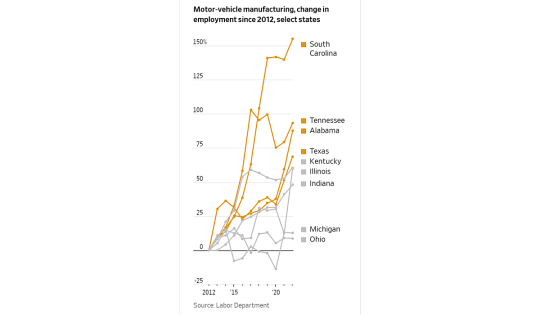
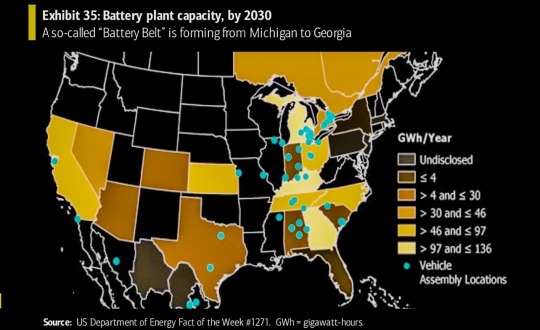

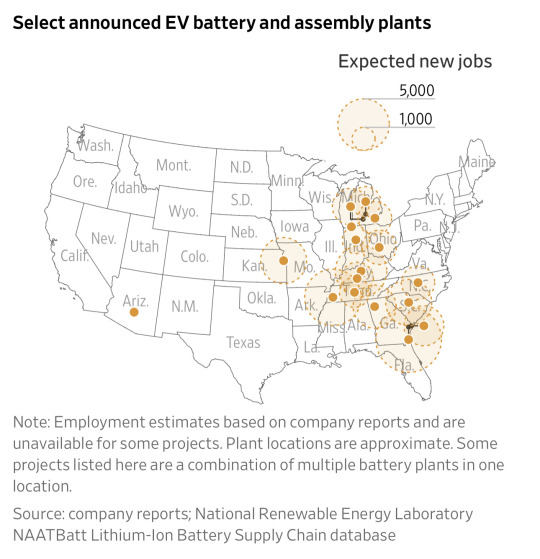
EV Boom Remakes Rural Towns in the American South
A town of 400 people scrambles to prepare for 6,000 auto workers as a giant Ford plant rises
https://www.wsj.com/business/autos/ev-plants-southern-states-ford-blueoval-city-2783da97?mod=mhp
#ev #ira #RenewableEnergy #esg #investment
0 notes
Text
Ford E-Tourneo Courier 2024 - Il offre un design distinctif inspiré des SUV
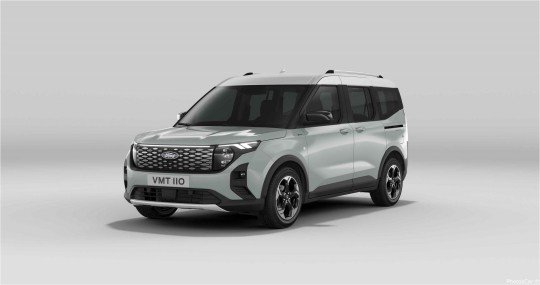
Ford lance le tout nouvel E-Tourneo Courier, une voiture électrique polyvalente pour toutes sortes d'activités.
Ford a lancé le très attendu E-Tourneo Courier lors de l'événement exclusif Bring On Tomorrow Live à Copenhague, au Danemark. Ce nouvel ajout à la gamme Ford souligne l'engagement indéfectible de la marque envers l'électrification et ouvre la voie à un avenir passionnant. L'E-Tourneo Courier est un véhicule multi-activités à cinq places avec un design accrocheur inspiré des SUV, offrant beaucoup d'espace pour les passagers et leurs effets personnels, le tout dans un format compact et adapté à la ville. Galerie - Ford E-Tourneo Courier 2024


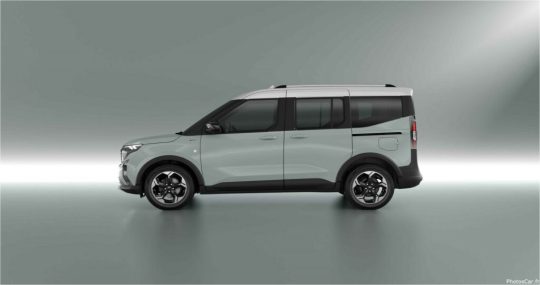
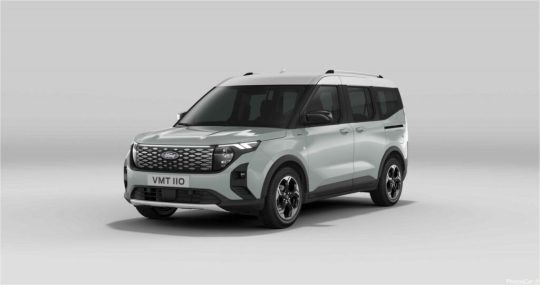
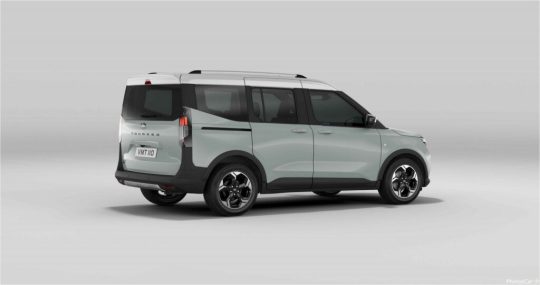

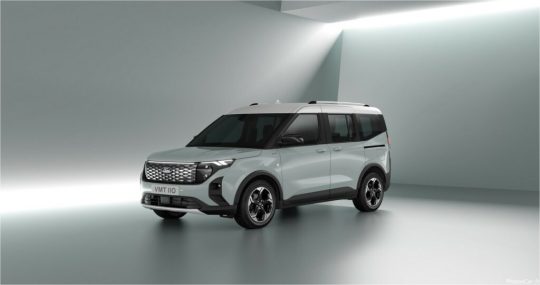
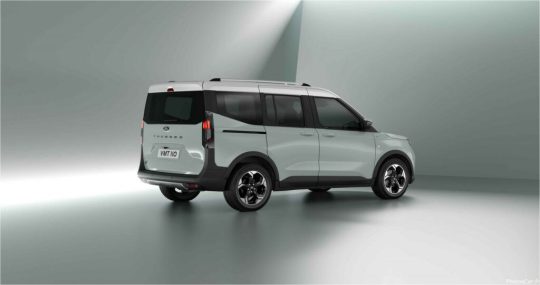
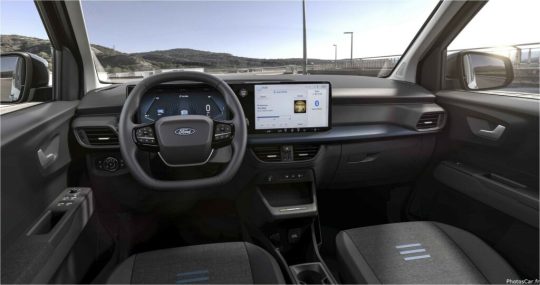

Pour rendre les voitures électriques plus attractives et accessibles, Ford a créé le E-Tourneo Courier. Ce véhicule utilise un moteur électrique avancé et comprend diverses expériences numériques et fonctionnalités de connectivité. Ford s'engage à innover et à satisfaire ses clients, et l'E-Tourneo Courier est un excellent exemple de cet engagement. Les mises à jour en direct garantissent que le produit continue de s'améliorer au fil du temps. L'E-Tourneo Courier de Ford est l'un de leurs 10 véhicules tout électriques dont la sortie en Europe est prévue d'ici 2024. Ford vise à atteindre zéro émission pour toutes les ventes de véhicules dans la région d'ici 2035, et investit 50 milliards de dollars dans le monde jusqu'en 2026 pour avoir plus de 2 millions de véhicules 100 % électriques en circulation d'ici la fin de l'année. Intérieur DU E-Tourneo Courier Ce véhicule électrique polyvalent accueille confortablement cinq adultes et leurs bagages. Il dispose d'une banquette arrière polyvalente divisée 60-40 et d'un espace de coffre 44 % plus important que son prédécesseur. Les passagers bénéficient également d'un espace pour la tête et les épaules amélioré et de multiples options de stockage, notamment une console centrale configurable, un compartiment de chargement caché et un coffre spacieux de 44 litres. Tableau de bord "digiboard" L'E-Tourneo Courier fait passer les expériences numériques au niveau supérieur. Sa pièce maîtresse high-tech est le captivant tableau de bord "digiboard"! doté d'un tableau de bord entièrement numérique et du système d'infodivertissement SYNC 4 contrôlé par un écran tactile généreux de 12 pouces. Intégrant de manière transparente Android Auto et Apple CarPlay sans fil ainsi qu'un chargeur de téléphone pratique. Cette cabine entièrement connectée permet aux passagers de rester connectés lors de leurs déplacements. Les mises à jour en direct permettent également des améliorations continues des fonctionnalités! éliminant ainsi le besoin de visites chez le concessionnaire. En matière de performances Le moteur électrique de 100 kW (136 ch) de l'E-Tourneo Courier permet une conduite tout électrique douce et raffinée. Les conducteurs peuvent également profiter de la commodité d'un mode de conduite à une pédale sélectionnable, ce qui simplifie les trajets quotidiens et longue distance. Avec la suite la plus complète de systèmes avancés d'aide à la conduite de sa catégorie, ce véhicule gère sans effort toutes les situations de conduite. Choisissez entre les modes de conduite Normal, Eco et Slippery pour adapter l'expérience de conduite à vos préférences. Options de charge AC et 100 kW DC disponibles La solution de recharge à domicile de Ford - livrée avec une application conviviale. Elle permet de programmer et de bénéficier de tarifs énergétiques potentiellement moins chers. L'E-Tourneo Courier peut passer de 10% à 100% avec une charge AC pendant la nuit, en seulement 5,7 heures. Le logiciel de Ford et le réseau de recharge BlueOval offrent un accès facile à l'infrastructure de recharge publique dans toute l'Europe. Les clients peuvent ajouter jusqu'à 87 km d'autonomie impressionnante en aussi peu que 10 minutes avec un chargeur CC rapide. Une charge de 10 à 80 % prend moins de 35 minutes ! ce qui est parfait pour des recharges rapides lors de vos déplacements. Disponible quant ? La production d'E-Tourneo Courier démarre au second semestre 2024 à Craiova, en Roumanie. Le crossover Puma, qui aura également une version électrique d'ici 2024, y sera également produit. Le nouveau Tourneo Courier avec moteur turbo EcoBoost de 1,0 litre générant 125 ch entrera en production fin 2023. Ford s'engage à proposer une gamme complète de produits. En conclusion Le tout nouvel E-Tourneo Courier est un véhicule électrique multi-activités remarquable qui allie polyvalence, pratique et aventure. L'engagement de Ford envers l'électrification reflété dans cette option tout électrique ventilée pour les clients. Avec un design captivant, des expériences numériques avancées et un vaste réseau de recharge! l'E-Tourneo Courier définit une nouvelle norme pour la mobilité urbaine. Restez à l'écoute pour plus de mises à jour et consultez le dossier d'information pour plus de détails passionnés sur la gamme de Ford. Read the full article
0 notes
Text
Ford receives $9.2 billion loan from US Department of Energy to build EV battery factories
The United States government has reaffirmed its commitment to move EV production to its shores instead of relying on foreign entities. The US Department of Energy’s Loan Program Office (LPO) has announced a conditional $9.2 billion loan for BlueOval SK (BOSK) — owned by Ford and South Korean battery producer SK On — to build three battery manufacturing plants, Bloomberg reports. The loan is the…
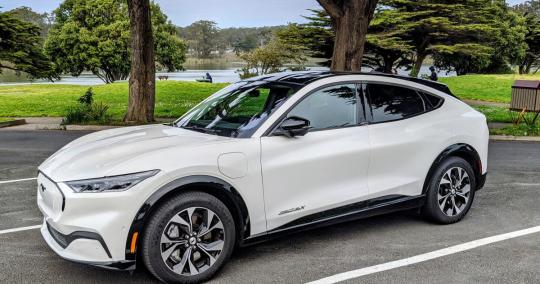
View On WordPress
0 notes
Text
#Ford EVs will gain access to the #Tesla SuperCharger network starting in about a year. The Ford BlueOval Charge Network already has 10,000 chargers, but throw in another 12,000 V3 SuperChargers from Tesla and that makes the single largest fast-charging network in North America. Would over 22,000 fast-charging stations give you the confidence to buy an EV? #electricvehicles #MustangMachE #F150Lightning

0 notes
Photo









1966 Ford GT40 MK1 built by the Blue Oval,
Courtesy Tom Hartley Jnr
#art#design#sportcar#sportcars#vintagecar#vintagecars#GT40#GT40 MK1#1966#blueoval#tom hartley Jnr#luxury cars#luxury lifestyle#sports#cars wallpaper#ford GT
257 notes
·
View notes
Photo

NEW RELEASE This is our Carbide-Series Bluetooth radio assembly for 1974-1979 Ford F-Series truck. Featuring Bluetooth, AM/FM, USB, Auxiliary Input, Sub-Woofer Channel, RCA Pre-Outs and a whopping 300w four-channel internal amplifier! . . Only @classicautosound . . . . . #4x4 #blueoval #bronco #builtfordtough #bumpside #diesel #dually #f150 #f250 #f350 #fordf100 #fordnation #fordperformance #fordraptor #fordsofinstagram #fordtruck #fordtrucks #fordtrucksforlife #fordtrucksofinstagram #fordtrucksworld #jet #obs #offroad #offroading #oldtrucks #truck #truckporn #trucks #trucksofinstagram #viptrucks (at Classic Auto Sound) https://www.instagram.com/p/Can5HtqpZQk/?utm_medium=tumblr
#4x4#blueoval#bronco#builtfordtough#bumpside#diesel#dually#f150#f250#f350#fordf100#fordnation#fordperformance#fordraptor#fordsofinstagram#fordtruck#fordtrucks#fordtrucksforlife#fordtrucksofinstagram#fordtrucksworld#jet#obs#offroad#offroading#oldtrucks#truck#truckporn#trucks#trucksofinstagram#viptrucks
3 notes
·
View notes
Link
0 notes
Photo

Js-Alternators.com Your #1 Source for High Output Alternators. 🏁 #mecanic #ford #fordtrucks #f150 #f250 #f350 #blueoval #dentside #trucks #dentsideford #dentsides7379 #dentsidenation #JsAlternators #liftedtrucks #fordsofinstagram #liftedtrucks #truckporn #fordpickup #builtfordtough #classicford #oldtrucks #fordracing #fordnation #forddaily #vintagetrucks #classictrucks #trucksdaily #fordproformance https://www.instagram.com/p/CS8EtaOMgjc/?utm_medium=tumblr
#1#mecanic#ford#fordtrucks#f150#f250#f350#blueoval#dentside#trucks#dentsideford#dentsides7379#dentsidenation#jsalternators#liftedtrucks#fordsofinstagram#truckporn#fordpickup#builtfordtough#classicford#oldtrucks#fordracing#fordnation#forddaily#vintagetrucks#classictrucks#trucksdaily#fordproformance
2 notes
·
View notes
